In This Topic
This article explains connecting a or an report to a XML data source. You can connect to this data source while creating a new report (via report wizard) or using report explorer (via report data source dialog).
Connect to XML Data Source using Report Wizard
The steps to connect to the XML data source are:
- Create a New Report.
- In the New Report dialog, choose the Report Type as RDLX, RDLX Dashboard, or Page and click Next.
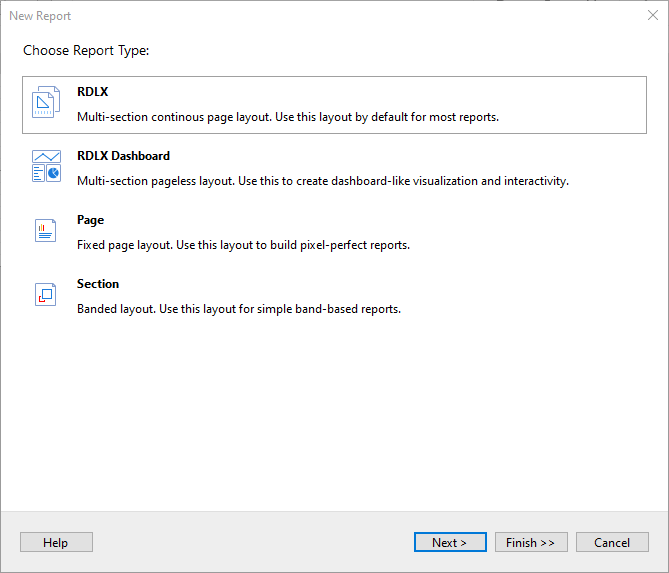
- Select the Data Source Type as XML and click Next.
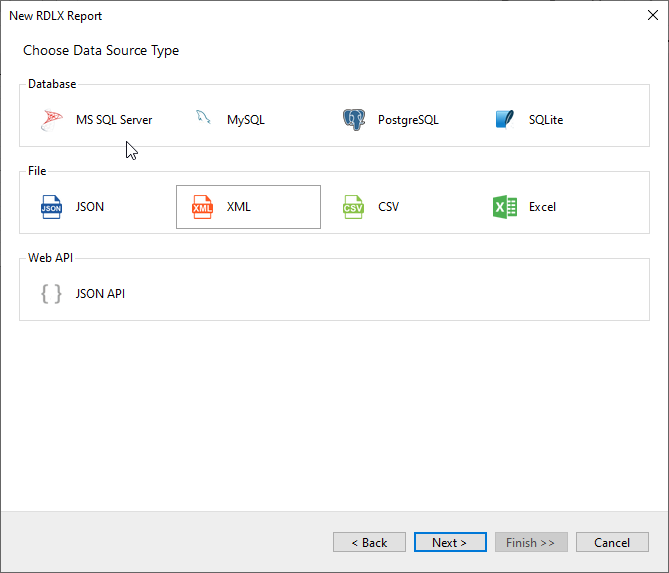
- To specify the xml File Path, click the Browse button and navigate to the desired file on your system. For example, you can connect to the 'Factbook.xml' sample data source that can be downloaded from GitHub.
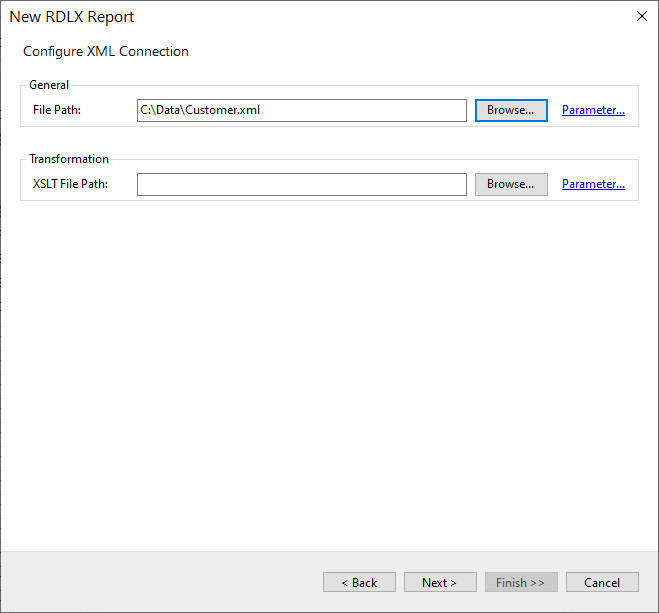
- To specify the runtime connection values, click Parameter (or Insert Parameter for queries) to open the Parameters dialog. Then click the Add button to add a new parameter, or select the existing parameter and specify the below details:
- Name: Specify the name of the parameter.
- Type: Select the value type (string by default) from the drop-down list.
- Testing Value: Specify the runtime value for the connection properties.
- Input Source: Select Interactive for non-hidden parameters and Programmatic for hidden parameters from the drop-down list.
- Click the Next option and configure the dataset by adding a valid query. Select the node from the data tree in the Path section to generate the query. The resulting query is displayed in the Query field.
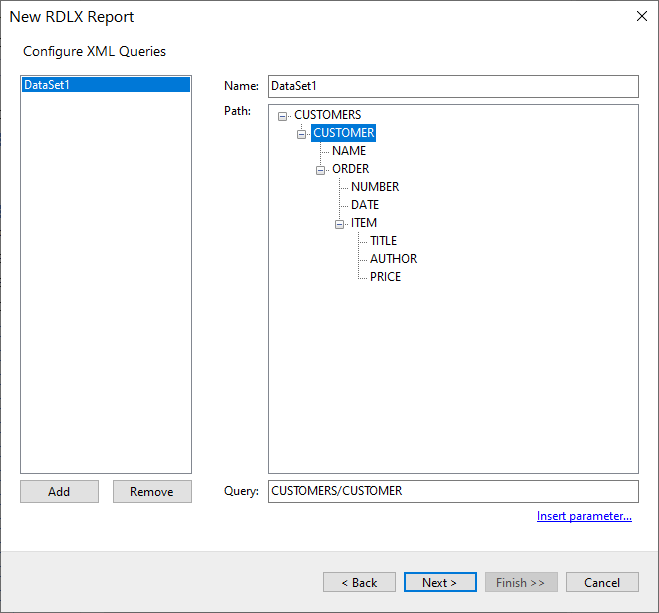
- On the final screen of the Report Wizard, review the summary of the report and click Finish to successfully add the report with the XML data source.
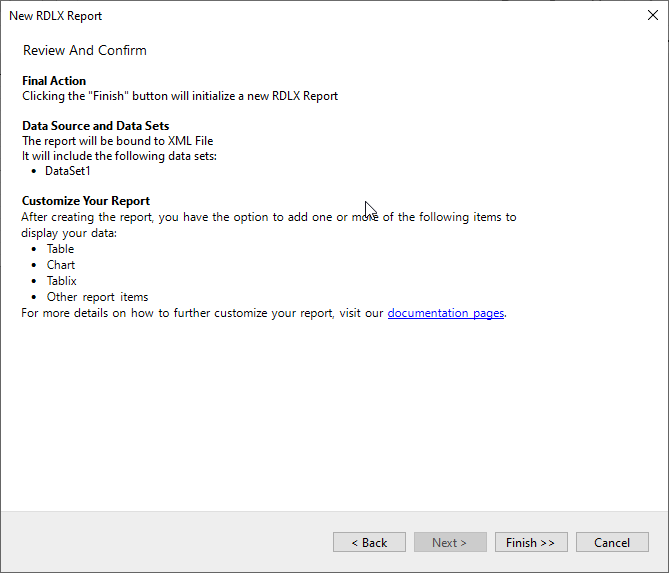
Connect to an XML Data Source using Report Data Source dialog
- In the Report Explorer, right-click the Data Sources node and select the Add Data Source option or click the Add button and select the Data Source option.
- In the Report Data Source dialog that appears, select the General page and enter the data source name in the Name field. By default, the data source name is set to DataSource1. This name appears as a child node to the Data Sources node in the Report Explorer.
- Under the Type field, select Xml Provider.
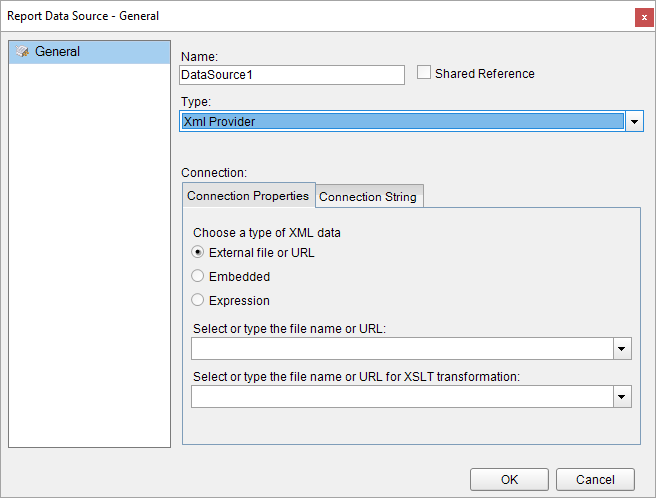
- In the Connection Properties tab, select the type of XML data as an External file or URL.
- Click the dropdown next to the Select or type the file name or URL field and select the <Browse...> option to specify the xml file path. For example, you can connect to the Factbook.xml sample data source which can be downloaded from GitHub.
The Connection String tab displays the generated connection string as shown below:
xmldoc=C:\Factbook.xml
For more information, see the Configuration Settings for XML Data Source section.
- Verify the generated connection string by clicking the Validate DataSource icon
 .
.
- Click the OK button to save the changes.
Configuration Settings for XML Data Source
The XML Data Provider provides the following configuration settings in the Report Data Source dialog.
The Connection Properties tab describes the type of xml data you want to use for connecting to a data source. You can also specify an XSLT file to apply to the XML data.
- External file or URL: This field requires you to enter the path of an external XML source such as a local file or the http location of a file.
- Embedded: This field requires you to enter the path of the XML file to embed in the report. You can also enter the data manually or edit the data in the selected XML file.
- Expression: This field requires you to enter the path expression. Users can also enter the path expression in the connection string.
The Connection String tab displays the XML connection string based on the defined configuration settings in the Connection Properties tab.
Note that elements in the connection string must be terminated with a semicolon (;) character.





